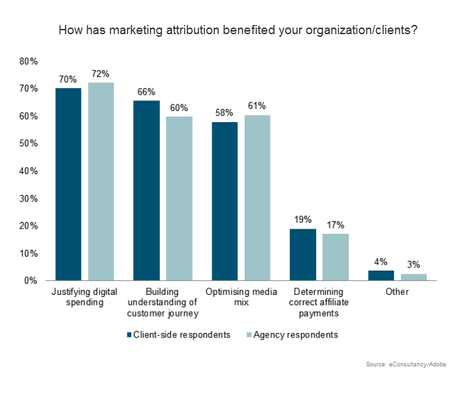These days, it seems that marketing attribution comes in many flavors, but most of them aren’t so refined. According to the November 2012 Econsultancy’s Quarterly Digital Intelligence Briefing: Making Sense of Marketing Attribution, produced in partnership with Adobe, the majority of marketers are using some sort of attribution, though a large portion – 28% of both client and agency respondents – are still using last click attribution.
If your attribution isn’t accurate, why bother?
Modern direct marketers will tell you that sometimes it’s worse to attribute revenue incorrectly than not to do so at all because you can make costly mistakes in how you spend your marketing budget. Fewer than 4 in 10 company marketers and agencies incorporate offline touchpoints – in store POS, direct mail, print media, and TV/radio—in their attribution. What does that tell you? It means that if you use any offline touchpoints there is 100% probability that your attribution is wrong. And that’s a bad way to make decisions.
Sure, if the goal is to justify digital media spend (cited by 70% of client-side respondents as the key benefit), then it’s a great way to make your case. For those of us who want to make the best use of our marketing dollars, there’s a better way.

A Better Way: Focus on the Customer
Though I understand why marketers are forced to use attribution to justify their channel spend, I’ll admit that I am disappointed that it’s the primary benefit. The next two benefits: Building an understanding of the customer journey and Optimizing media mix are much more interesting – especially when used in conjunction with each other and with a customer focus.
Sophisticated attribution techniques incorporate all of a customer’s activity, both online and offline, to gain a holistic view. Without the complete view, you can’t understand how marketing actions influence consumer buying behavior. By modeling behavior at the individual customer level, you can then optimize the media mix for each customer. That’s right, in case you missed it – for each customer.
Most people talk about optimizing media mix by pulling on levers to increase or decrease marketing spend or reach by channel. This is different. The concept of focusing on a customer’s behavior allows marketers to evolve from marketing in segments to marketing to individuals. Knowing which customer is likely to respond to a specific marketing action – or that a customer doesn’t need the marketing action to purchase – is much more powerful for driving revenue and spend efficiency.
